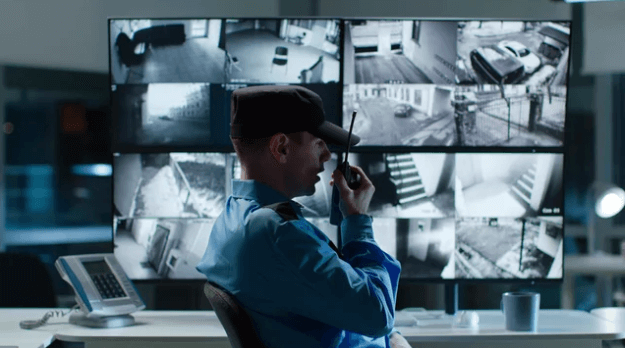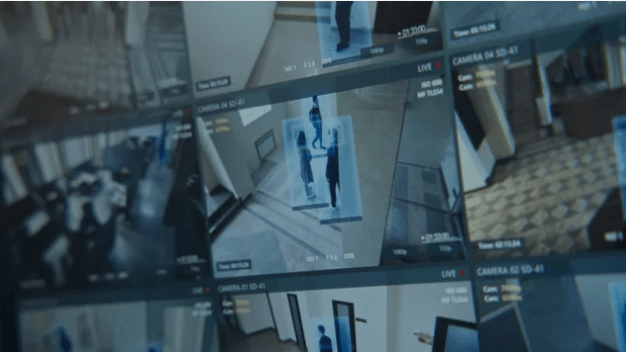Forensic video enhancement plays a crucial role in modern investigative techniques, allowing for the extraction of valuable information from video footage that may be critical to solving crimes or understanding complex events. With the proliferation of surveillance cameras and the widespread use of smartphones, video evidence has become an integral part of criminal investigations, court proceedings, and accident reconstructions. However, video recordings often suffer from various limitations, such as poor lighting conditions, low resolution, motion blur, or digital artifacts, which can hinder the accurate interpretation of the content.
Forensic video enhancement techniques aim to overcome these challenges by employing a range of sophisticated tools and algorithms to enhance the quality, clarity, and detail of video footage, enabling investigators and forensic experts to uncover hidden details, identify individuals, or reconstruct events with greater accuracy. By harnessing the power of advanced image processing, pattern recognition, and machine learning algorithms, forensic video enhancement has become an indispensable tool in the pursuit of justice and the quest for truth. In this article, we will explore the principles, methods, and applications of forensic video enhancement, shedding light on the techniques used to optimize video evidence and enhance its evidentiary value in various forensic investigations.
Table of Contents: hide
What Is Forensic Video Enhancement?
What Types of Video Evidence Can Benefit from Enhancement?
What Is Forensic Video Enhancement?
Forensic video enhancement is the process of improving the quality and clarity of video footage for legal purposes, such as criminal investigations or court proceedings. The goal is to extract as much information as possible from the video, making it easier to identify individuals, objects, or events that may be crucial to a case.

Key aspects of forensic video enhancement include:
- Improving Clarity: Enhancing the overall sharpness, contrast, and brightness of the video to make details more visible.
- Stabilization: Reducing camera shake or movement to create a smoother, more stable video.
- Noise Reduction: Minimizing or eliminating visual noise, such as graininess or pixelation, which can obscure important details.
- Color Correction: Adjusting the color balance to improve accuracy and make certain elements more distinguishable.
- Resizing and Formatting: Changing the size, aspect ratio, or file format of the video to optimize playback and compatibility with various devices or software.
- Frame Analysis: Carefully examine individual frames to identify key details or extract specific images for further analysis.
- Synchronization: Combining multiple video sources or angles to create a comprehensive view of an event.
Forensic Video Enhancement is performed by skilled professionals using specialized software and techniques. The process adheres to strict legal guidelines to ensure the admissibility of the enhanced video as evidence in court proceedings.
What Types of Video Evidence Can Benefit from Enhancement?
Several types of video evidence can benefit from enhancement techniques. These include:

Types of Forensic Video Evidence
- Surveillance Footage: Videos captured by security cameras in public areas, businesses, or residential properties are commonly used as evidence. Enhancing these videos can help improve the visibility of individuals, vehicles, or objects of interest.
- Dashcam Recordings: Dashcam videos from vehicles can provide valuable evidence in traffic accidents, hit-and-run cases, or other incidents on the road. Enhancement can reveal license plate numbers, identify pedestrians or vehicles involved, and provide a clearer view of the sequence of events.
- Body-Worn Camera Footage: Videos recorded by law enforcement officers or individuals wearing body cameras can be critical in assessing interactions, documenting incidents, or gathering evidence. Enhancing such footage can aid in identifying individuals, clarifying actions, and improving overall comprehension.
- Security Camera Footage: Videos recorded by security systems within buildings, banks, or public spaces can be important in investigating crimes such as theft, assault, or vandalism. Enhancements can help reveal facial features, identify suspicious activities, and extract details that were initially difficult to discern.
- Smartphone Videos: With the ubiquity of smartphones, video recordings captured by witnesses or victims can provide valuable evidence. Enhancing smartphone videos can enhance the visibility of details, clarify actions, and potentially identify individuals or events.
- Low-Quality or Degraded Videos: In some cases, video evidence may be of poor quality due to factors like low resolution, compression artifacts, or environmental conditions. Forensic enhancement techniques can mitigate these issues to some extent, improving visibility and enabling a better interpretation of the content.
It’s important to note that the success of video enhancement depends on the specific characteristics of the original footage, such as resolution, lighting conditions, and overall quality. While enhancement techniques can significantly improve the visibility of details, there are inherent limitations to what can be achieved based on the available information in the video.
Is Forensic Video Enhancement Admissible in Court?
The admissibility of forensic video enhancement in court can vary depending on several factors, including jurisdiction-specific rules, the authenticity of the evidence, and the methodologies used in the enhancement process. Admissibility is ultimately determined by the judge, who considers the enhanced video evidence’s relevance, reliability, and probative value.

Is Forensic Video Enhancement Admissible in Court
To ensure the admissibility of forensic video enhancement, it is essential to follow established forensic practices and adhere to legal requirements. This typically involves the following:
- Qualified Experts: The video enhancement should be performed by qualified forensic experts who have the necessary training, knowledge, and experience in forensic video analysis. They should be able to demonstrate their expertise and testify as expert witnesses if required.
- Validated Methodologies: The techniques and methodologies used in the enhancement process should be scientifically validated and accepted within the forensic community. This helps establish the reliability and credibility of the enhancement results.
- Proper Documentation: Detailed documentation of the enhancement process is crucial. This includes recording the steps taken, the software tools used, any modifications made to the original video, and the rationale behind those modifications. Proper documentation helps establish the transparency and integrity of the enhancement process.
- Chain of Custody: Maintaining a proper chain of custody is essential to establish the authenticity and integrity of the video evidence. It ensures that the video has not been tampered with or altered during the enhancement process.
- Peer Review and Validation: If available, having the enhanced video evidence reviewed and validated by other qualified experts can further strengthen its admissibility. Peer review helps establish the scientific validity and reliability of the enhancement techniques used.
It’s important to note that the admissibility of enhanced video evidence can be challenged by the opposing party in court. They may question the methodology, qualifications of the expert, or the reliability of the enhancement process. Therefore, it is crucial to meet the necessary legal and scientific standards to increase the likelihood of admissibility. The final decision on admissibility rests with the judge, who evaluates the evidence and arguments presented by both parties.
What Other Forensic Techniques Complement Video Enhancement?
In addition to video enhancement techniques, several other forensic techniques can complement the analysis and investigation of video evidence. Here are a few examples:

Other Forensic Techniques
- Forensic Photogrammetry: Forensic photogrammetry is the process of measuring and analyzing objects or scenes based on photographic evidence. By utilizing specialized software, investigators can extract three-dimensional information from two-dimensional images or videos, enabling the reconstruction of crime scenes or objects from different perspectives.
- Forensic Animation: Forensic animation involves creating computer-generated visual reconstructions of events captured in video footage. By using computer graphics and modeling techniques, investigators can recreate crime scenes, accidents, or other events to help illustrate and understand complex scenarios for analysis and presentation in court.
- Digital Forensics: Digital forensics involves the examination and analysis of digital devices, such as computers, smartphones, or storage media, to extract evidence relevant to a case. In the context of video evidence, digital forensics can involve recovering deleted or hidden video files, analyzing metadata, or identifying tampering or manipulation of video files.
- Forensic Video Analysis: Forensic video analysis incorporates a range of techniques specifically designed for the examination and interpretation of video evidence. This includes video authentication, video stabilization, video tracking, frame-by-frame analysis, and video comparison to identify discrepancies, alterations, or patterns within the footage.
- Pattern Recognition and AI-Assisted Analysis: Advanced technologies, such as machine learning and pattern recognition algorithms, can be applied to video analysis. These techniques can help automate the identification and categorization of objects, activities, or behaviors within video footage, assisting investigators in identifying relevant information and patterns that may be crucial to a case.
It’s important to note that the selection and application of forensic techniques depend on the specific circumstances of a case and the nature of the video evidence available. Forensic experts and investigators often employ a combination of these techniques to maximize the reliability and accuracy of their analyses.
Final Thought
In conclusion, forensic video enhancement serves as a powerful tool in the realm of forensic science, aiding investigators in uncovering crucial details, reconstructing events, and presenting compelling evidence in legal proceedings. As technology continues to evolve, we can expect further advancements in this field, leading to more accurate and efficient analysis of video evidence, ultimately contributing to the pursuit of justice and the truth.



